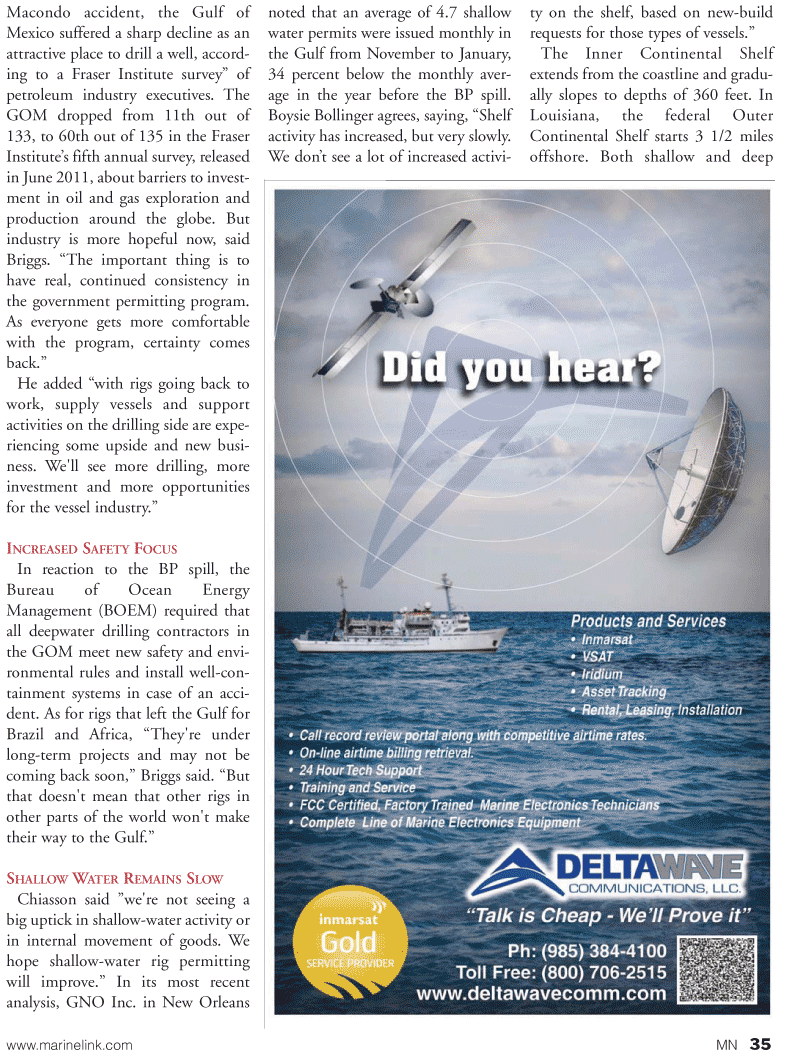
Page 35: of Marine News Magazine (April 2012)
Offshore Service Operators
Read this page in Pdf, Flash or Html5 edition of April 2012 Marine News Magazine
Macondo accident, the Gulf of Mexico suffered a sharp decline as an attractive place to drill a well, accord- ing to a Fraser Institute survey? of petroleum industry executives. The GOM dropped from 11th out of 133, to 60th out of 135 in the Fraser Institutes fifth annual survey, released in June 2011, about barriers to invest- ment in oil and gas exploration andproduction around the globe. But industry is more hopeful now, said Briggs. The important thing is to have real, continued consistency in the government permitting program. As everyone gets more comfortable with the program, certainty comes back.?He added with rigs going back to work, supply vessels and support activities on the drilling side are expe- riencing some upside and new busi- ness. We'll see more drilling, more investment and more opportunities for the vessel industry.? INCREASEDSAFETY FOCUSIn reaction to the BP spill, the Bureau of Ocean Energy Management (BOEM) required that all deepwater drilling contractors in the GOM meet new safety and envi- ronmental rules and install well-con- tainment systems in case of an acci-dent. As for rigs that left the Gulf for Brazil and Africa, They're under long-term projects and may not be coming back soon,? Briggs said. But that doesn't mean that other rigs inother parts of the world won't make their way to the Gulf.? SHALLOW WATER REMAINSSLOW Chiasson said ?we're not seeing a big uptick in shallow-water activity or in internal movement of goods. We hope shallow-water rig permitting will improve.? In its most recent analysis, GNO Inc. in New Orleans noted that an average of 4.7 shallow water permits were issued monthly in the Gulf from November to January, 34 percent below the monthly aver- age in the year before the BP spill. Boysie Bollinger agrees, saying, Shelf activity has increased, but very slowly. We dont see a lot of increased activi- ty on the shelf, based on new-build requests for those types of vessels.? The Inner Continental Shelf extends from the coastline and gradu- ally slopes to depths of 360 feet. In Louisiana, the federal Outer Continental Shelf starts 3 1/2 miles offshore. Both shallow and deep www.marinelink.com MN35

 34
34

 36
36
